Use the → Index page for a quick, visual menu.
A selection of images from the recent Pane e Miele show, recently exhibited at MEGA, Milan.
Pane e Miele is a collaboration with Giorgia Mocilnik.
Photography: Delfino Sisto Legnani.
Big thanks to beekeeper Piano Bee for the use of his hives when making these sculptures.
(Artist statement below images).



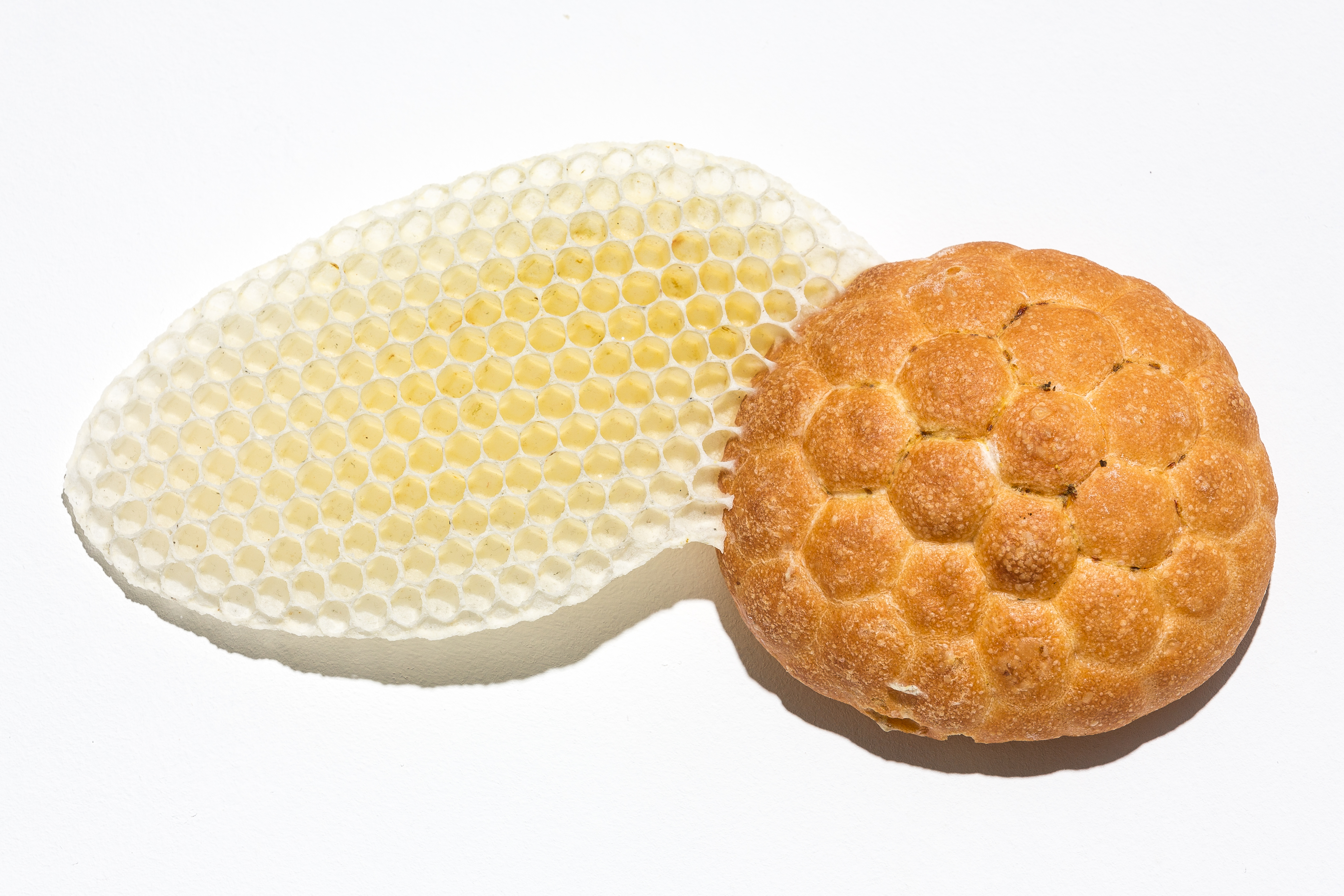

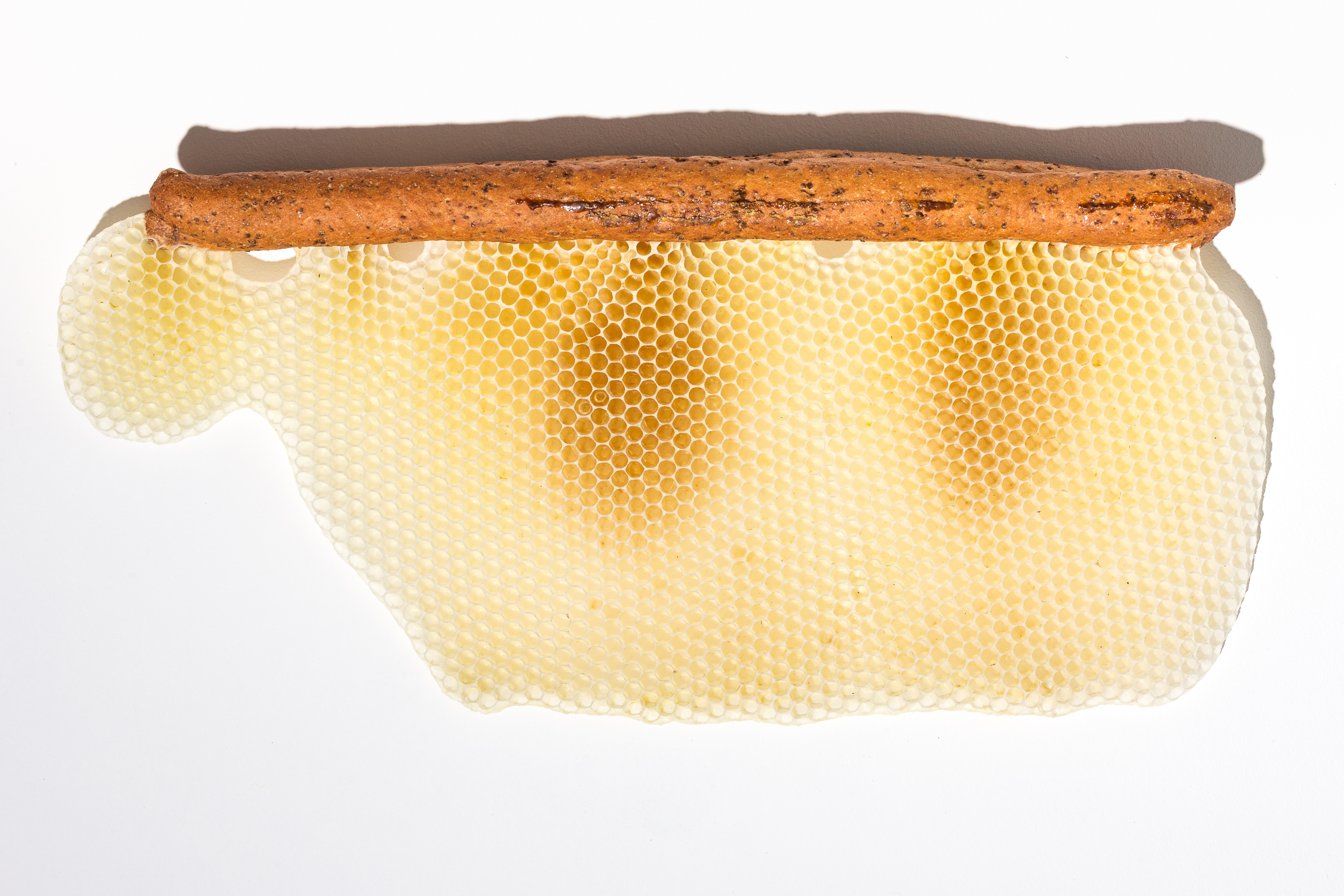
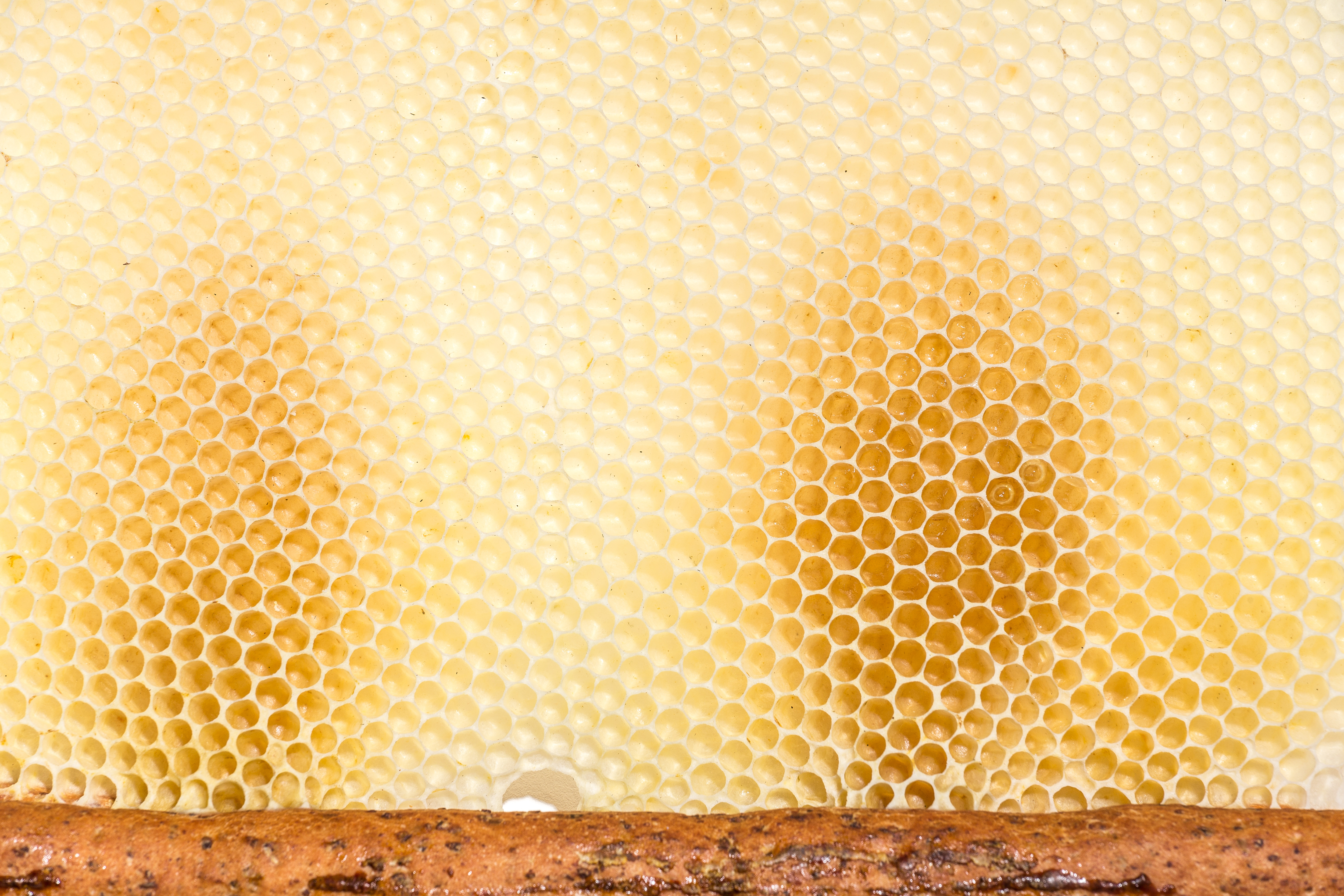
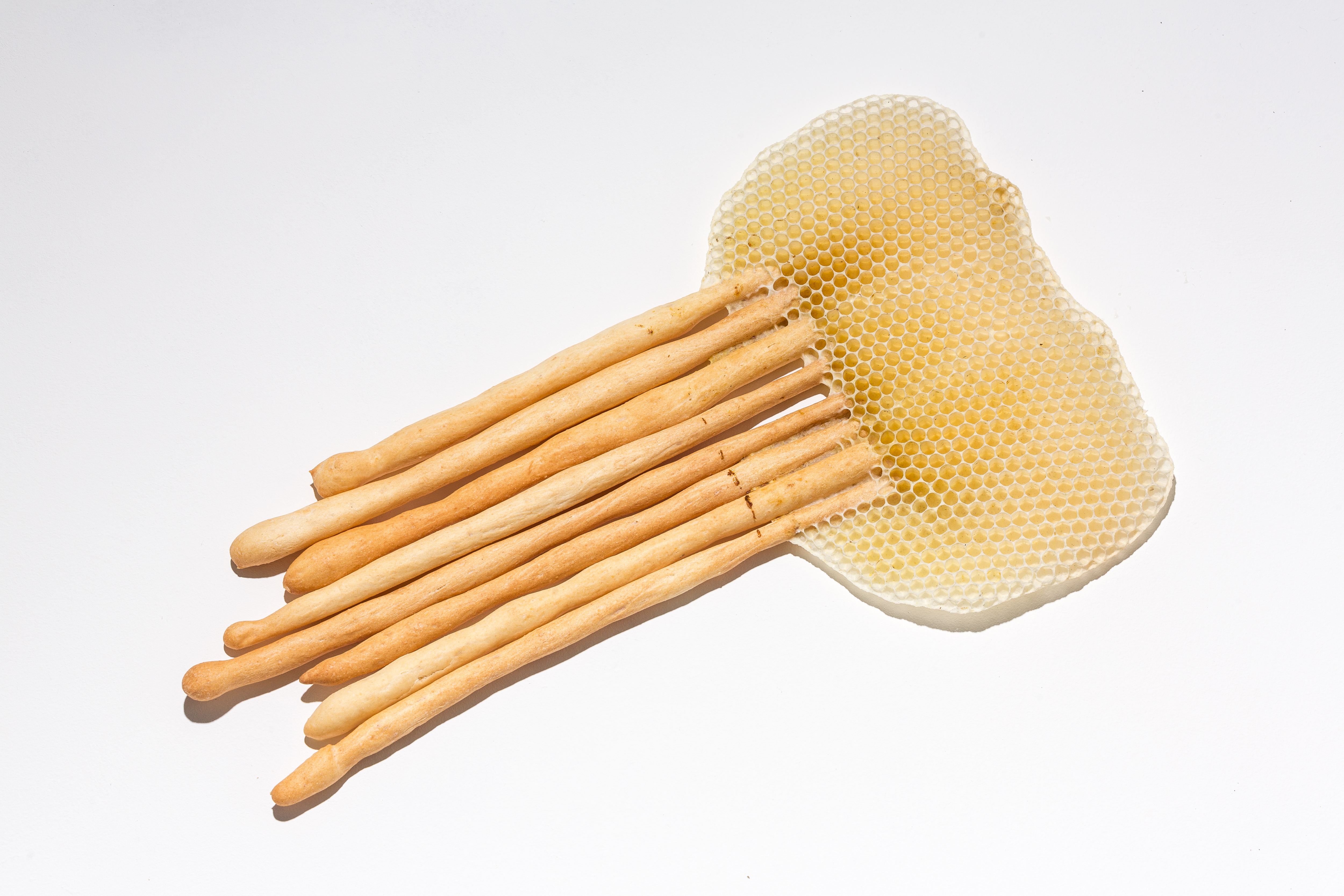
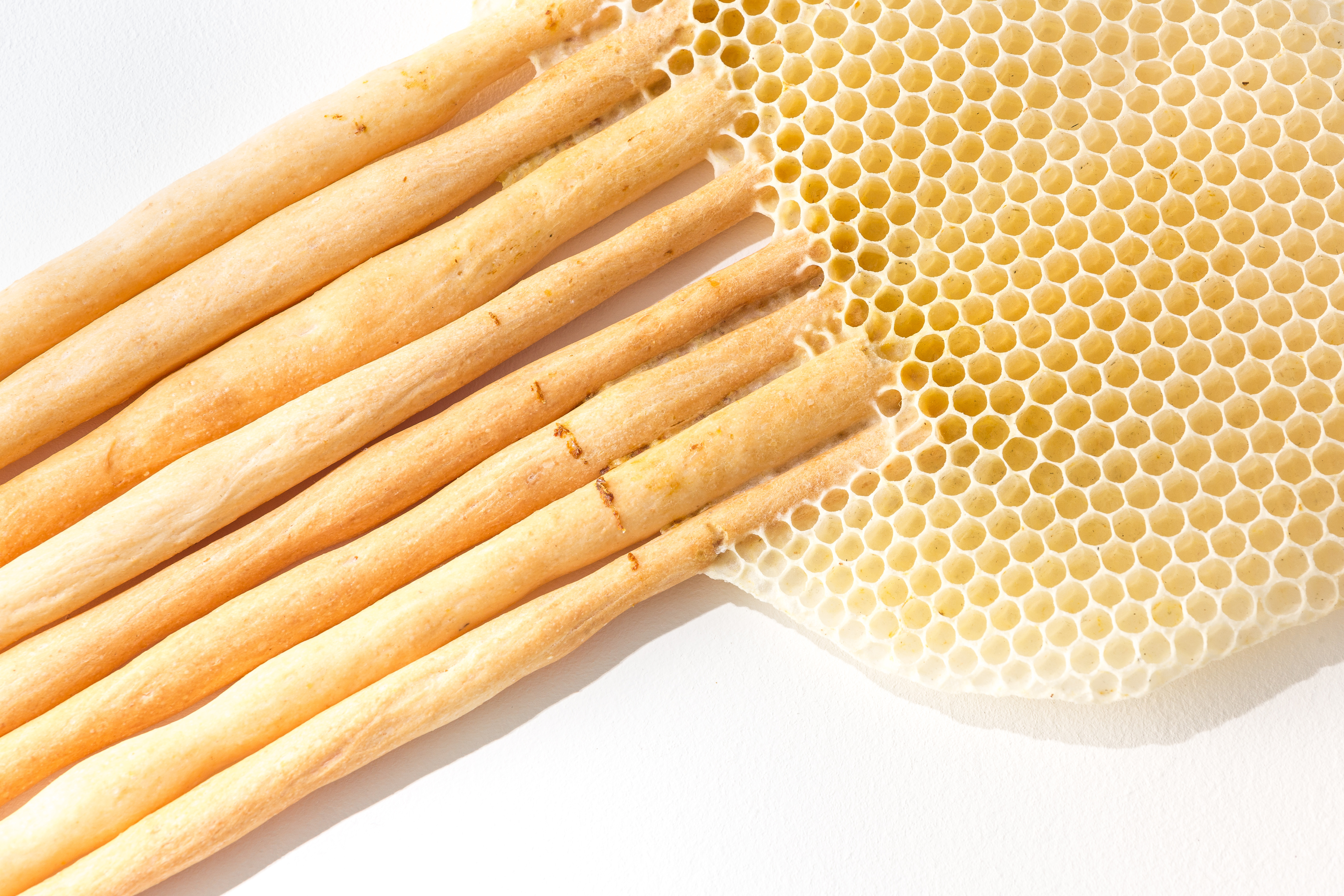
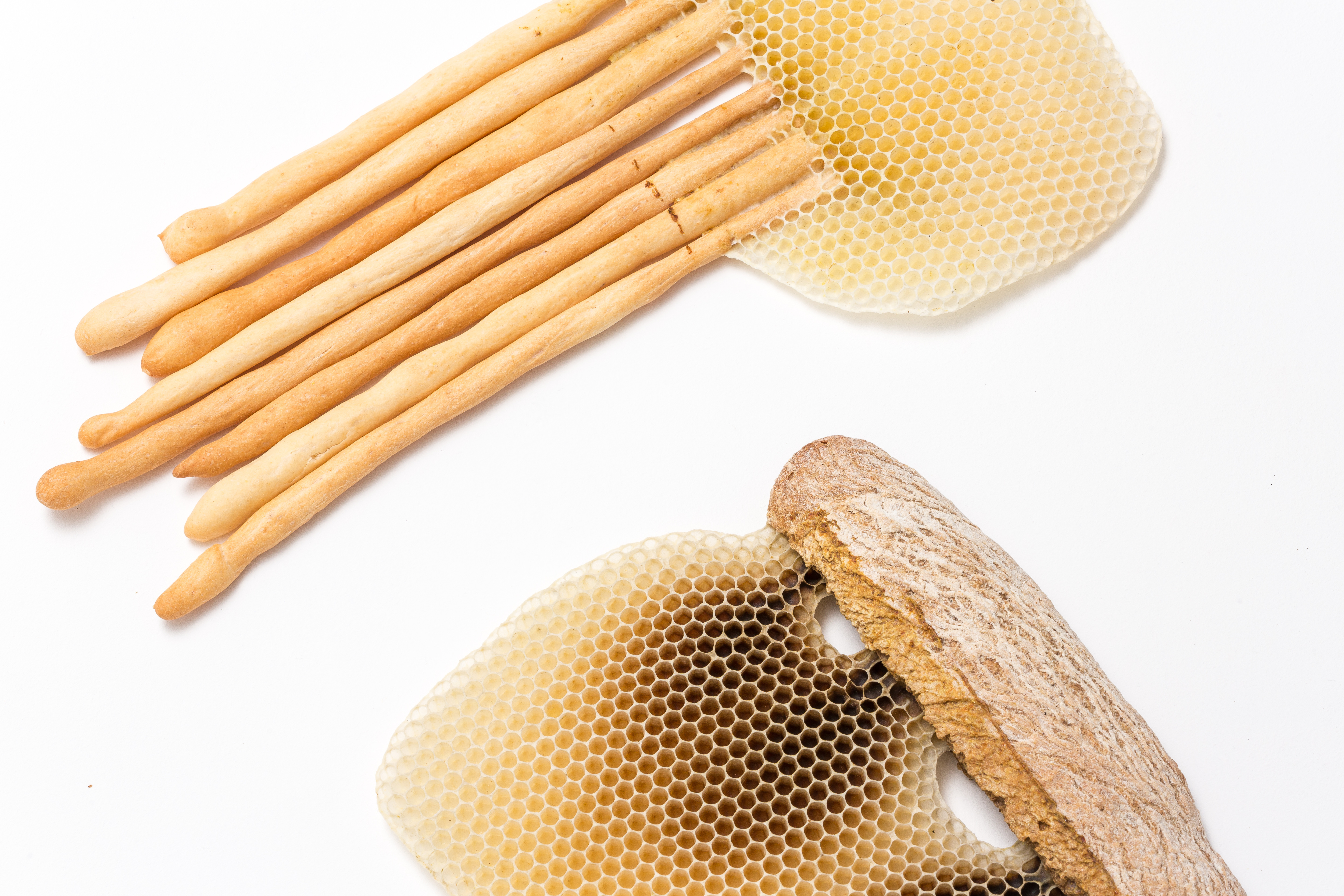
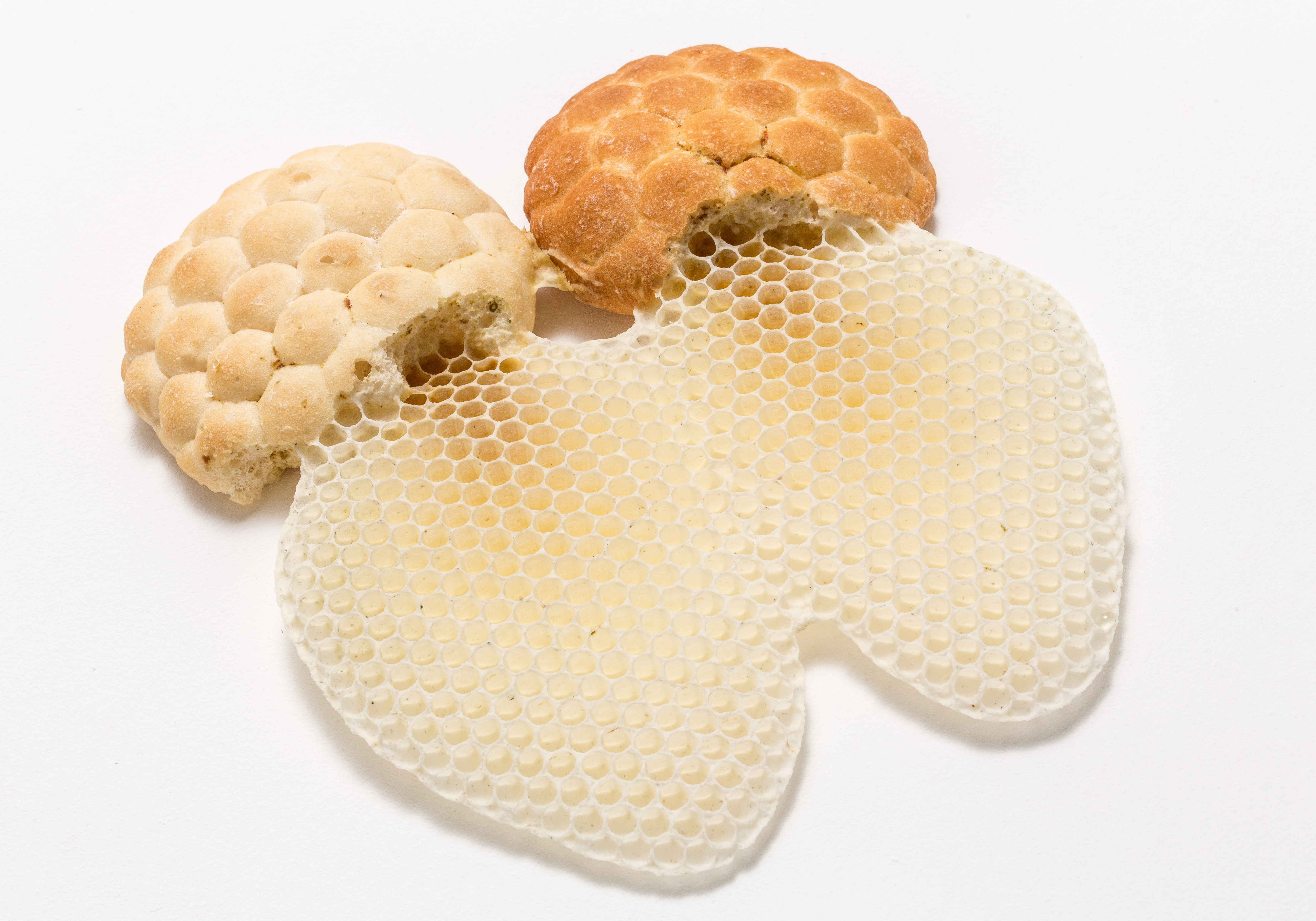


ARTIST STATEMENT
Pane e Miele is an exhibition of twelve sculptural works of bread and honeycomb; the latter made and attached by Apis mellifera (the European honeybee). With these twelve sculptures the artists have gently, but deliberately, tested the adaptability of bees as animal architects. The objects highlight the intelligence of bees as architects; as well as the connection between bees and the food we eat.
We have always eaten bread and honey. Bread has been a dietary staple in the west for millennia and honey has been hunted, robbed, produced and consumed for even longer. These materials are immemorial and can be traced to the ancients via archeological sites throughout the Mediterranean – jars of (still edible) honey were discovered alongside treasures in Egyptian tombs; loaves of bread were found, intact, in the ashes of Pompeii.
Although the shape of the breads was known, the comb the bees made was always a surprise. This is a true collaboration with the bees as, although the artists directed where comb could be built, the outcome (the shape, size, colour and number of comb segments) was improvised by the bees, in the hive.
It is the second edition of the Bread + Honey series which was produced in Melbourne, Australia, and exhibited in Melbourne and Canberra, in 2015 and 2016. In Australia the breads reflected the various cultures that emigrated there: Italian sourdoughs; Turkish smit; French baguettes; German pretzels. In Italy the story of the breads selected is the story about the deep traditions of Italian baking and regional styles: similar breads have different, quite interesting, shapes; ingredients change from region to region.
Pane e Miele is a collaboration between Italian artist Giorgia Mocilnik; Honey Fingers (a beekeeper and artist from Melbourne, Australia); and the beautiful European honeybee, Apis mellifera.